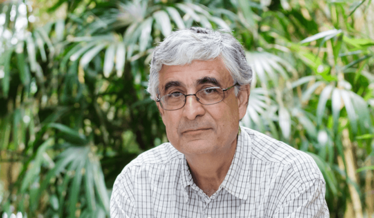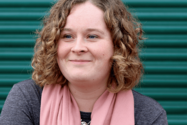Kallikrein Dream
Sitting Down With... Eleftherios P. Diamandis, Hold ’em for Life Chair in Prostate Cancer Biomarkers, Head of Clinical Biochemistry, Mount Sinai Hospital and University Health Network; Professor & Head, Division of Clinical Biochemistry, Department of Laboratory Medicine & Pathobiology, University of Toronto.

How did you first become interested in cancer biomarkers?
My involvement goes back 35 years. In the 1980s, there was a lot of interest in new biomarkers, and there was a flurry of activity with the discovery of prostate specific antigen (PSA), and a number of other markers, like CA 125 for ovarian cancer, CA 15-3 for breast cancer, and C 19-9, which is used for pancreatic and colon cancer. As a young biochemist, I was fascinated by all these new discoveries, and naturally wanted to get involved.
When PSA was discovered, the general consensus was that the family of PSA genes included three members. But in the early 1990s, there were new reports describing genes homologous to PSA, in the same genomic region. So we developed a hypothesis that there may be other undiscovered members of this family. We initiated a genomic effort to find them, and were surprised to find a whole family, not of three genes, but of 15 different genes on exactly the same genomic locus on chromosome 19. We subsequently cloned, characterized, and named the enzymes that they code – serine proteases that belong to the kallikrein family. And I’m still studying them to this day.
What makes the kallikreins so fascinating?
Many researchers are looking into their biological function. The family appear to be very nice biomarkers not only for prostate cancer, but also ovarian, lung and other cancers. And we’re only now beginning to understand what these genes – and the proteins they produce – are doing. For example, we’re now convinced that the kallikreins participate in diverse biological functions, such as semen liquefaction, in which the major player is PSA. They also play a major role in the cascade of events involved in skin desquamation and regeneration, and we’ve found them in cervical fluid, and in sweat. Kallikrein 6 is highly expressed in the brain, and we suspect it may play a role in the development of neurodegenerative diseases such as Alzheimer’s. It’s becoming clearer and clearer that these proteins have diverse functions in various parts of the body.
In the last five years, there has also been tremendous interest in developing therapeutics based on kallikrein enzyme inhibition. We have shown that in certain diseases, the activity of these enzymes is increasing. Examples include Netherton syndrome (a rare skin disease) and also more common conditions like atopic dermatitis and psoriasis – we have shown that they are all likely to involve increased proteolytic activity of kallikreins. So developing inhibitors would be a logical therapeutic intervention.
Just this one family of enzymes appears to lead your research in many different directions – how do you choose what to pursue?
The diversity of our projects reflects the diversity of the expression of these enzymes! Of course, we can’t make rapid progress in all of these areas – we need to look for the low hanging fruit. We believe that our work on developing therapeutics for skin diseases is currently the most promising area. And we’re not the only ones – there are many groups working to develop specific inhibitors for these enzymes, and even therapeutic giants like Novartis are making major investments in this area.
What do you look for in a potential cancer biomarker?
Most of the markers we currently have in the clinic are used for monitoring previously identified cancer patients, to see if their therapy is working. Unfortunately, this means the impact of existing markers is relatively small. We need to look to population screening, and find something that we can test for in asymptomatic individuals. The impact this could have on clinical care is huge. If we can detect cancer early and implement effective therapies much earlier, this could make a big difference to patient outcomes.
Which of your current projects are the most exciting?
We are working to develop assays to measure a small number of tissue-specific proteins. It’s an area that hasn’t really been looked into before, and we’re hoping to identify their clinical value, as we suspect that they have hidden potential.
We’ve also just published a paper in which we put forward the idea of creating a database of personalized cancer biomarkers that are useful in different patients. We have named them rare markers – markers that may be highly useful, but only in a few patients. We think this could be another exciting new avenue. For the last 30 years we have tried to find one biomarker that will work for all patients. But molecular studies show that different types of cancer are not specific diseases – breast or ovarian cancer is actually a group of related diseases, with different molecular features and signatures. And that means we have to accept that finding one biomarker to work for all of these patients is not very realistic. We believe that the way forward is identifying rare biomarkers and developing repositories for people to report them – eventually we could create a rich enough database to look up a biomarker for any patient.
Do you have any advice for newcomers to the field?
I’m actually in the middle of preparing a new lecture on mentorship, and I do think it’s important to share your experiences with younger people. An important tip is to be honest with your science. There is a lot of press lately on fabrication of results – this is totally unacceptable. It doesn’t build careers; it destroys them. So I always tell my students: never consider fabrication, don’t go there. Be honest with yourself and with your work.
I would also say: work hard, develop multidisciplinary approaches, and read widely to expand your knowledge. But don’t forget to have interests and passions outside of science. I don’t want to create robots with tremendous output, but to develop human beings who enjoy life. Finally, be persistent – don’t be discouraged by failures. If you get 99 failures and one success from 100 attempts, embrace it! Learn and move forward.
If you weren’t a scientist, what would you be?
I’ve had a great deal of fun exploring new knowledge – and it’s a privilege to work with very talented young people. My number one alternative would be a musician; however, though I love listening to music, I have no talent for making my own... Without science, I’d probably have chosen something athletic – perhaps a tennis player. But given how wonderful and rewarding my career has been so far, I don’t think I’d change it!

I have an extensive academic background in the life sciences, having studied forensic biology and human medical genetics in my time at Strathclyde and Glasgow Universities. My research, data presentation and bioinformatics skills plus my ‘wet lab’ experience have been a superb grounding for my role as a deputy editor at Texere Publishing. The job allows me to utilize my hard-learned academic skills and experience in my current position within an exciting and contemporary publishing company.















